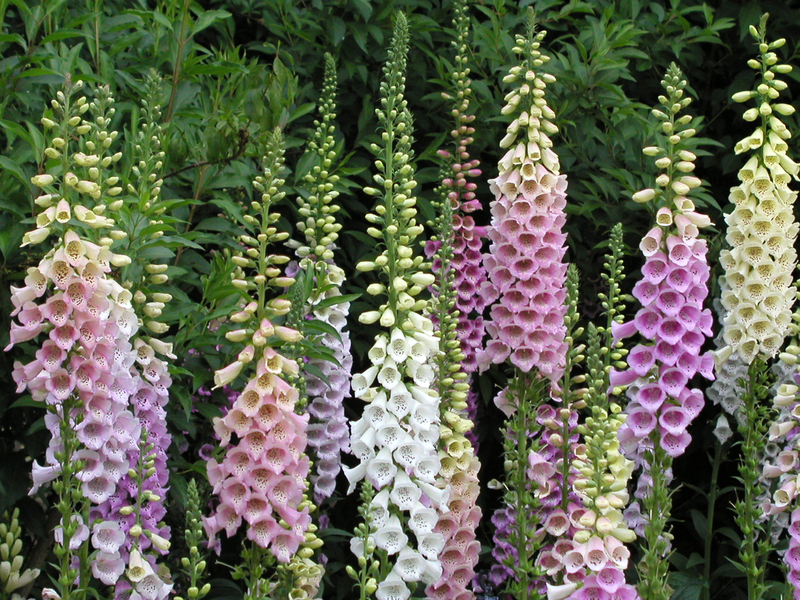Empower your orchids to flourish
Posted on 23/05/2025
Empower Your Orchids to Flourish: The Ultimate Guide
Orchids are renowned for their stunning blooms, unique shapes, and captivating colors. However, these charming plants often intimidate both novice and seasoned gardeners due to their reputation for being fussy. The good news is that with the right care, you can truly empower your orchids to flourish--rewarding you with vibrant, long-lasting blossoms. This comprehensive, SEO-optimized guide will demystify orchid care and help transform your growing experience, ensuring your plants not only survive but thrive.

Understanding Orchids: Foundation for Flowering Success
Before diving into care tips, it's essential to understand orchids at their core. Knowing more about these botanical marvels is the first step to helping them reach their full potential.
What Makes Orchids Unique?
- Epiphytic Lifestyle: Many popular orchids, like phalaenopsis and dendrobiums, grow on trees in their native habitats, attaching themselves to bark and absorbing moisture from the air.
- Root Structure: Orchid roots are thick, spongy, and covered in a layer called velamen, which helps them soak up water and nutrients efficiently.
- Bloom Cycles: Unlike many plants, orchids often bloom once or twice a year, with flowers lasting several weeks or even months.
By understanding these distinctive characteristics, you're better equipped to nurture orchids for optimal growth and blossom potential.
Key Elements for Orchid Empowerment and Success
To empower your orchids to flourish, focus on the fundamentals: light, water, humidity, temperature, nutrition, and proper potting.
1. Optimize Light for Lush Blooms
Light is the most crucial environmental factor for healthy growth and abundant flowers.
- Natural Light: Orchids thrive in bright, indirect sunlight. East or west-facing windows are ideal. Too much direct sun can scorch leaves, while too little impedes blooming.
- Artificial Light: If natural light is limited, use LED grow lights. Position them 6-12 inches above your orchids for 12-16 hours daily.
Tip: Observe leaf color for clues about light quality--dark green indicates too little light, while yellowish leaves or red spots suggest excessive sun.
2. Master the Art of Watering Orchids
Orchids are sensitive to moisture. Too much water leads to root rot, but too little causes dehydration.
- Watering Frequency: Typically, water once per week. In warm, dry environments, you may need to water more often.
- Proper Technique: Water early in the day, soaking roots thoroughly and emptying excess from the saucer. Never let your orchid sit in water.
- Quality of Water: Use room-temperature rainwater or distilled water if possible. Avoid softened or heavily chlorinated tap water.
Empowering your orchids with the correct watering regimen is essential for robust growth and consistent flowering.
3. Elevate Humidity for Thriving Orchids
Orchids naturally flourish in humid environments. Indoor air often lacks the necessary humidity, especially during colder months.
- Target Humidity: Aim for 50-70% humidity.
- Humidification Tips:
- Place the orchid pot on a pebble tray filled with water (without letting roots sit in water).
- Use a room humidifier.
- Mist leaves in the morning with lukewarm water.
By maintaining the ideal humid environment, you actively support your orchid's natural habits and health.
4. Maintain Ideal Temperatures
Temperature fluctuations play a crucial role in empowering orchids to bloom.
- Day/Night Difference: Orchids prefer daytime temperatures of 70-85?F (21-29?C) and nighttime temperatures of 60-70?F (15-21?C). A 10-15?F (4-8?C) drop at night often stimulates blooming.
- Avoid Extremes: Sudden chills or hot drafts can damage delicate orchid flowers and leaves.
Consistent temperature management encourages regular bloom cycles and keeps your orchid resilient.
5. Feed for Flourishing: Orchid Nutrition Tips
Orchids require specific nutrients to produce strong leafy growth and gorgeous blooms.
- Use Specialized Orchid Fertilizer: Choose a balanced fertilizer (such as 20-20-20) that contains micronutrients.
- Feeding Frequency: Apply diluted fertilizer every 2-4 weeks during active growth (spring and summer). In winter, reduce feeding to every 6-8 weeks.
- "Weakly, weekly" Rule: It's better to feed orchids weak solutions more frequently than strong solutions less often, to prevent root burn.
Fertilizing orchids the right way empowers them to develop spectacular blossoms and resist disease.
6. Repotting: The Key to Long-Term Orchid Health
Repotting provides fresh media, prevents root disease, and gives your orchid room to grow.
- When to Repot: Generally, every 1-2 years or when potting medium breaks down or roots outgrow the container.
- Choosing Media: Use well-draining mixes like bark, sphagnum moss, or coconut husk chips. Never use regular potting soil.
- Post-Repotting Care: Water sparingly for a week, and place in a shaded area to help roots recover.
Healthy roots are the foundation of empowered orchid growth.
Empowering Different Types of Orchids
Different orchid genera might need slight adjustments to these care tips. Here's how to adapt your approach:
Phalaenopsis (Moth Orchid)
- Prefers medium, indirect light and warm temperatures.
- Water when potting medium feels dry to the touch.
- Prune spent flower spikes to encourage reblooming.
Cattleya
- Thrives in bright, filtered sunlight.
- Allow potting mix to dry slightly between waterings.
- Provide good air movement to prevent root rot.
Dendrobium
- Enjoys high humidity and strong light.
- Let the potting mix dry out completely between waterings in winter dormancy.
- Resume regular watering in spring to stimulate growth.
Oncidium
- Likes lots of light and good air flow.
- Prefers to dry out between waterings but not for extended periods.
- Fertilize more often during active growth.
Troubleshooting: Overcoming Common Orchid Problems
Even with the best care, issues can arise. Identifying problems early will help you empower orchids to thrive and avoid lasting damage.
- Wilted or Mushy Leaves: Usually a sign of overwatering or rot. Remove damaged roots and repot in fresh medium.
- Drooping Buds or Blooms: Often due to temperature shock or low humidity. Increase room humidity and protect from cold drafts.
- Pest Infestation: Watch for aphids, spider mites, or scale insects. Remove by wiping leaves with a solution of mild soapy water, or use insecticidal soap.
- No Blooms? Your orchid may not be getting enough light or the right cycle of temperatures. Try moving it to a brighter spot and ensure cooler nights.
The more proactively you address these issues, the better your orchids will perform.
Advanced Strategies to Empower Your Orchids Further
1. Implement Controlled Rest Periods
Many orchids require a period of rest--typically after flowering--which mimics natural cycles and helps trigger future blooms. Reduce watering and feeding during these dormant stages.
2. Encourage Flower Spikes
To stimulate a new flower spike, try moving your orchid to a cooler spot for a few weeks at night. The drop in temperature can signal it's time to rebloom.
3. Monitor Airflow and Ventilation
Good air circulation prevents fungal diseases and encourages healthy growth. Place a small fan nearby (not directly on the plant) if your growing area is stagnant.
4. Experiment With Mounting
Adventurous growers can mount orchids on pieces of bark, driftwood, or cork. This replicates their wild, epiphytic lifestyle and often results in even healthier plants!
Empowering Your Orchids Year-Round: Seasonal Considerations
- Spring/Summer: Orchids are actively growing. Provide more water, nutrients, and light. Repot if needed.
- Autumn: Some types begin to slow down. Gradually reduce watering and feeding as temperatures decline.
- Winter: Most orchids rest. Keep them slightly cooler, limit watering to prevent rot, and increase humidity to combat dry air from indoor heating.

The Benefits of Empowered, Flourishing Orchids
When you nurture your orchids with intention and understanding, they respond with:
- Stunning, long-lasting blooms that brighten your home or garden for weeks or months
- Robust, healthy leaves and roots that resist pests and diseases
- Consistent annual flowering, often with larger and more numerous flower spikes over time
- Personal satisfaction and stress relief--growing orchids is a deeply rewarding journey
Remember, empowering your orchids to flourish is as much about patience and observation as it is about watering or feeding. Each orchid is unique, and learning their cues brings you closer to becoming an orchid expert.
Conclusion: Unleash the Full Potential of Your Orchids
Whether you're growing a majestic phalaenopsis on your windowsill or cultivating a collection of rare species, you now have the knowledge needed to empower your orchids to flourish. By focusing on light, water, nutrients, humidity, proper potting, and preventive care, you'll transform your orchid growing experience into a rewarding adventure.
Start implementing these expert tips today and watch your orchids transform from hesitant starters to confident bloomers, delighting you and all who see them for years to come!
Empower your orchids. Empower yourself. Happy growing!

